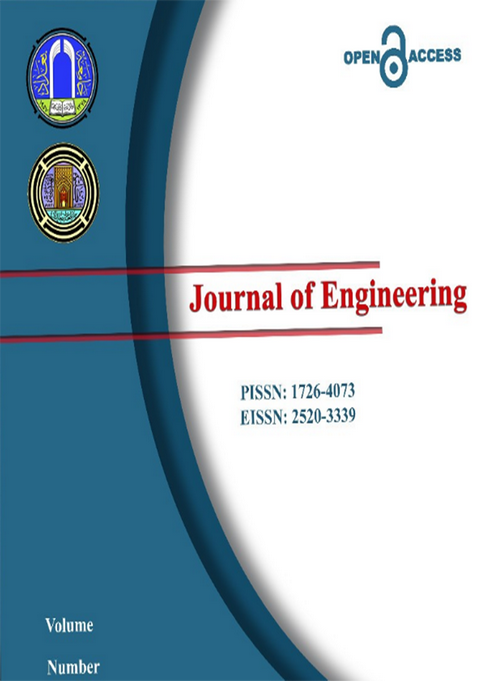Abstract
The performance of photovoltaic (PV) panel having staggered metal foam fins was examined
experimentally in Baghdad, Iraq. Three staggered metal foam fin configurations attached to the
backside of the PV panel were studied. The measured parameters were front and back surfaces
temperature, open voltage and current circuits, maximum power, and PV efficiency. It was noted
that the maximum electrical efficiency enhancement was 4.7% for staggered metal foam fins (case
III) than the reference PV panel. The operating temperature of the cell was increased when the
value of solar intensity was high. Thereby, the electrical efficiency was decreased. It was found
that the metal foam fins decreased the PV temperature by 2-3 oC
experimentally in Baghdad, Iraq. Three staggered metal foam fin configurations attached to the
backside of the PV panel were studied. The measured parameters were front and back surfaces
temperature, open voltage and current circuits, maximum power, and PV efficiency. It was noted
that the maximum electrical efficiency enhancement was 4.7% for staggered metal foam fins (case
III) than the reference PV panel. The operating temperature of the cell was increased when the
value of solar intensity was high. Thereby, the electrical efficiency was decreased. It was found
that the metal foam fins decreased the PV temperature by 2-3 oC
Keywords
Experimental study
porous fins
PV panel
PV performance
Staggered Fins
Abstract
ذات الزعانف المعدنية المتداخلة .تمت دراسة ثلاثة انواع من ترتيبات زعانف الرغوة (PV) تم فحص أداء الألواح الضوئية
المعدنية الملتصقة مع السطح الخلفي للوح الكهروضوئي .المتغيرات المقاسة هي درجة حرارة السطح الأمامي والخلفي ، والجهد
والتيار المفتوحان، والطاقة القصوى ، والكفاءة الكهروضوئية .ولوحظ أن أقصى تعزيز للكفاءة الكهربائية كان 4.7 ٪ بالنسبة إلى
زعانف الرغوة المعدنية بالمقارنة مع اللوح الكهروضوئي المرجعي. ولوحظ أن درجة حرارة تشغيل الخلية تزداد كلما زادت
قيمة الاشعاع الشمسي وبالتالي تنخفض الكفاءة الكهربائية للوح الكهروضوئي. وجد أن استخدام زعانف الرغوة المعدنية يقلل م. 3- درجة حرارة اللوح بمقدار
المعدنية الملتصقة مع السطح الخلفي للوح الكهروضوئي .المتغيرات المقاسة هي درجة حرارة السطح الأمامي والخلفي ، والجهد
والتيار المفتوحان، والطاقة القصوى ، والكفاءة الكهروضوئية .ولوحظ أن أقصى تعزيز للكفاءة الكهربائية كان 4.7 ٪ بالنسبة إلى
زعانف الرغوة المعدنية بالمقارنة مع اللوح الكهروضوئي المرجعي. ولوحظ أن درجة حرارة تشغيل الخلية تزداد كلما زادت
قيمة الاشعاع الشمسي وبالتالي تنخفض الكفاءة الكهربائية للوح الكهروضوئي. وجد أن استخدام زعانف الرغوة المعدنية يقلل م. 3- درجة حرارة اللوح بمقدار
Keywords
زعانف متداخلة، زعانف مسامية، لوح كهروضوئي، اداء اللوح الكهروضوئي، د ا رسة تجريبية
